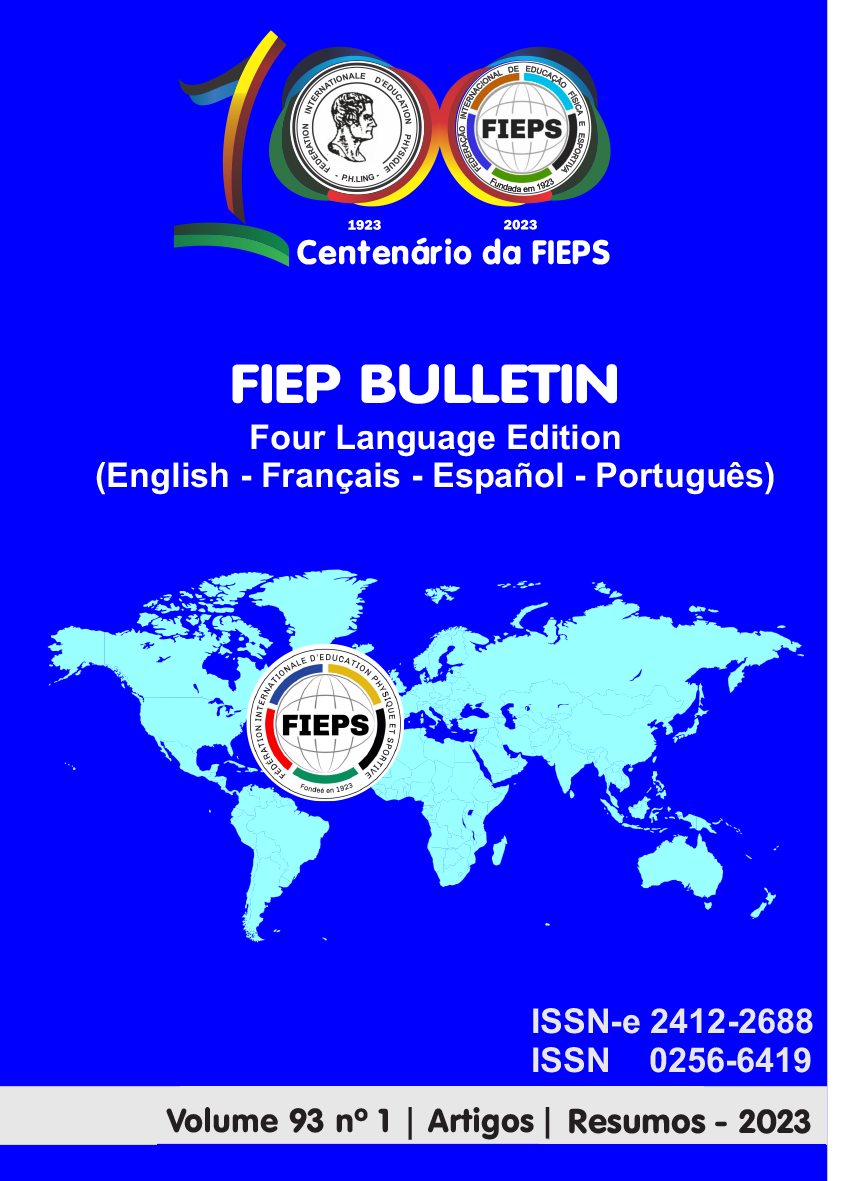51 - SOMATIC PARAMETERS AND PHYSICAL FITNESS LEVEL DETERMINATION BY PHYSICAL ACTIVITY ATTITUDES OF SLOVAK UNIVERSITY STUDENTS
Palavras-chave:
university students, somatic parameters, physical fitness, attitudes, physical activityResumo
Introduction: Regular whole life recreational movement activity plays irreplaceable role for increasing individual health and prolonging active life. From the point of the view the childhood and adolescent age are the decisive periods for performing physical activities and its integration into life of each man. University students are specific and numerous social groups. Hey are in critical age from the point of performing recreational activities and thus their physical fitness level can often decrease. In this contribution authors deal with relationships of physical activity attitudes with somatic and physical fitness parameters of Slovak universities students. Material and methods: In this research are involved 606 students, 344 males and 262 females from two Bratislava Universities (8 faculties). Attitudes were estimated by Lickert scale in three components (cognitive, emotional and tendency to act), from somatic parameters were measured body height and body weight, physical fitness was evaluated with reduced Eurofit and former Czechoslovak battery tests: sit and reach, standing broad jump, medicine ball throw, shuttle run 10x5m, sit-ups and endurance shuttle run. We have available students from the Faculty of Physical Education and Sports (FSPORT) and from 8 different faculties (not physical education and sport study orientation). Differences and relationships were evaluated by t-test and correlative coefficients; we used •p<0.05, ••p<0.01 significance level. Results: We found that there are not great differences between somatic parameters FSPORT and others faculties, both male and female. In physical fitness factors reached clear majority FSPORT students. In attitudes reached significantly higher levels FSPORT students in all three components, mainly in component tendency to act. Gender differences in attitudes were not very different. Components of attitudes relate to physical fitness level mostly in groups of other faculties students, more often among females. Conclusions: We proved that lower like average values in component tendency to act in other faculties courses often lack of physical activity and it influences also lower level of physical fitness. We suppose that entrance in FSPORT studies also means that attitudes components must reach relatively higher levels.Downloads
Downloads
Publicado
2023-03-29
Edição
Seção
TRABALHOS PUBLICADOS
Licença
Autores que publicam nesta revista concordam com os seguintes termos:- Autores mantém os direitos autorais e concedem à revista o direito de primeira publicação, com o trabalho simultaneamente licenciado sob a Licença Creative Commons Attribution que permite o compartilhamento do trabalho com reconhecimento da autoria e publicação inicial nesta revista.
- Autores têm autorização para assumir contratos adicionais separadamente, para distribuição não-exclusiva da versão do trabalho publicada nesta revista (ex.: publicar em repositório institucional ou como capítulo de livro), com reconhecimento de autoria e publicação inicial nesta revista.
- Autores têm permissão e são estimulados a publicar e distribuir seu trabalho online (ex.: em repositórios institucionais ou na sua página pessoal) a qualquer ponto antes ou durante o processo editorial, já que isso pode gerar alterações produtivas, bem como aumentar o impacto e a citação do trabalho publicado (Veja O Efeito do Acesso Livre).
Como Citar
51 - SOMATIC PARAMETERS AND PHYSICAL FITNESS LEVEL DETERMINATION BY PHYSICAL ACTIVITY ATTITUDES OF SLOVAK UNIVERSITY STUDENTS. (2023). Fiep Bulletin - Online, 93(1), 489 A 501. https://ojs.fiepbulletin.net/fiepbulletin/article/view/6651










